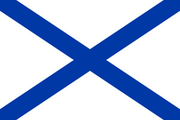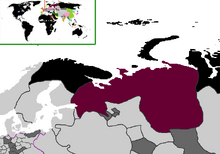N/A | |||||
| Capital | Veliki Novgorod | ||||
| Largest city | Novgorod | ||||
| Other cities | Kazan, Novaya Rossa, Staraya Ladoga, Minsk, Moscow, Samara, Nizhni Novgorod, | ||||
| Language official |
Old Novgorod Dialect, Old Church Slavonic | ||||
| others | Germanic and Uralic Languages | ||||
| Religion main |
Russian Orthodox | ||||
| others | Islam | ||||
| Ethnic Groups main |
Russian | ||||
| others | Tatar | ||||
| Demonym | Novgorodian | ||||
| Government | Mixed | ||||
| Tsar | Peter Mihailovich I Boyasin | ||||
| : | Invited or Dismissed by Veche | ||||
| Posadnik | Pavel Petrovich Parskov | ||||
| Area main |
N/A | ||||
| water (%) | N/A | ||||
| Population | 12+ milion (guesstimation) | ||||
| Established | 1136 | ||||
| Currency | Rubble? | ||||
This is a Work-in-Progress Article for the Novgorod Republic in the Principia Moderni II Map Game Universe.
History[]

Pre-1450[]
main article:History of the Novgorod Republic
Post-1450[]
In 1450, the Novgorodian people forced the Prince of Novgorod, who just so happened to also be the Grand Duke of Moscow, to sign the most severe Ryad of all history, essentially diminishing his role to a mere military commander and giving most of his power to the Novgorod-born Posadnik of Novgorod. The Novgorod Veche soon approved of the purchase of arquebuses for the druzhina, and later refused to pay any more tribute to any man or nation that is not born of the Novgorod land, and since the Horde could not find tax collectors for Novgorod, they attacked both Muscovy, who refused to collect the taxes, and Novgorod, and the Golden Horde was defeated, and its territory diminished by 10%.
Over the Next few years, the Novgorodians sent out Emissaries to the outer world to learn of advances in science, military strategy, naval technologies, navigation, and medicine. One of the most significant gains of these emissaries was the adoption of the more efficient medical practices of Arabic cultures, and the construction of the first printing press in all of Russia. In 1456, the first Russian (most importantly Novgorodian) gunsmith opens his shop, but does not receive any business until the early 1460s. The Novgorodian Veche also approved of a plan to build a navy for both the protection of the Baltic and trade ships of the Novgorodian Land.
After the Annexation of the Hansa by Danemark, the Hanseatic League was greatly weakened, and this provided both and opportunity to control and destroy. While Venice was nearly sure of its dissolution of the league in order to ensure the venetian monopoly, the Novgorodian traders, although only a Kontor, took the advantage and seized control of the crumbling league, building it back up as the years went. Novgorod from that point on had become the de facto leaders of the league, and because of them, Orthodoxy had spread in some minor degree to northern Germany. Novgorod was then introduced into the old Baltic but now Novgorodian-Baltic quarter of the league. The Novgorodians hope to augment the glory of the league, but are still building it up to where it once was, and established Kontors in both England and Scotland.
Trade, however, was not the only thing Novgorod wanted domination in. While the Muscovites tried with great effort to unite the smaller Russian states, the Posadnik and Boyar council seem to think that it is in their best interest to unite the Russian lands (as many as they can), under their banner. Constant bribes were sent to the most influential Pskov Veche members to encourage reuniting with Novgorod, and the military was constantly upgraded to seek retribution, but also to show Pskov the military power of Novgorod. This worked, and the Novgorodian conquest of Kazan proved the military prowess of Novgorodian commanders.
The Novgorodian armies easily defeated the Khanate using a new technique: tactical bombing. Using black powder and an underground tunnel, the Novgorodian forces were able to blow a hole in the Walls of the Capital hidden by a fireworks show. This created enough panic to keep the defenders busy, while not interfering with the sacking of Kazan and the capture of the khan. the Kremlin held on for another day before it succumbed to the Novgorodian forces. The Prince went to the city himself and forced the Khan to Convert to the Orthodox faith and bow down to him, acknowledging the supremacy of Novgorod and the Annexation of his lands. In the following years, Novgorod concentrated in improving infrastructure, admitting England into the Hansa, and to a certain extent, sent missionaries to Kazan.
Not even two years after the Novgorodians Defeated and annexed Kazan, the Novgorodians gained Pskov as a vassal, naming their Namestnik for the first time. The Next years contained the construction of what will be the All-Lands Slavic-Latino-Greek academy. The Hansa finally regained its strength and started a Kontor in Crimea. Novgorod first proposes the idea of a Russian Confederacy. A blue St Andrew's cross on a white field becomes the official Naval Jack of the Novgorodian navy as proposed and agreed by by the Veche. The number of Posadniks is officially reduced to one (before having various posadniks and a chief posadnik), making his role more like that of a Prime Minister and speaker of the house in a parliamentary democracy (the Veche being parliament).
Soon enough, Poland became a pestulance to Novgorod, denying all petitions, so Novgorod, along with Moscow, saw the opportunity with the Mongol invasions to seize control of Poland as soon as it was clear that the Khanates were weakening. The Russians were seen as liberators. They drove back Lithuanian and Mongol forces alike to seize control of the nation, and not before long Warsaw was flying the Novgorodian flag. But it was more than annexation that interested Novgorod and Muscovy, the Russias have very little Natural boundaries such as mountains. They needed buffer states, and Poland was the perfect one. it is now that talks about a Russian Confederation are at their peak, and the Russians (Muscovy and Novgorod), after much debate, decided that it was too many people for them to handle in a military occupation, so they created conditions for Polish autonomy under the occupation, and a final division of lands was decided upon, a condition was that they must join the Grand Federation of all the Russias. After the Annexation of Minsk, the Novgorodians decide on a new coat of arms, and an official flag, and not.
Novgorod Proposed several potential political systems for the RF, and most of them were incorporated into the Russian federation. Since its founding, the Russian federation has nominally had a Zemsky sobor, but it has never had elections for it.
Federal Era[]
Main Article: Grand Russian Federation
For the History of the Novgorodian State during the Russian Federal Era visit the Grand Russian Federation Article.
Post-Federal Era[]
After the Fall of the Russian federation, the Grand Prince of Novgorod liberated many lands from the Caliphal threat. However, Vecheslav could not save them from themselves, and the Russian government was weak, only holding nominal power. This became extremely evident when the Muscovian regime had some trouble keeping many of its former territories in check, and after a short war with the only pre-1500 Russian state to break away, Great Perm. Moscow asked to be annexed into Novgorod, thus forming a truly Russian state. From that point, The Novgorod Republic then began to expand outward, gaining Minsk through Marriage, and then keeping it when a unionist Tsar united both thrones. After that, the Novgorodian Republican Tsardom of Russia was declared, acompanied by the Minskian Tsardom of Russia, and the Romanovs forever granted themselves the rule of Minsk as Knyazes of Minsk (essentially, eternal governors.)


